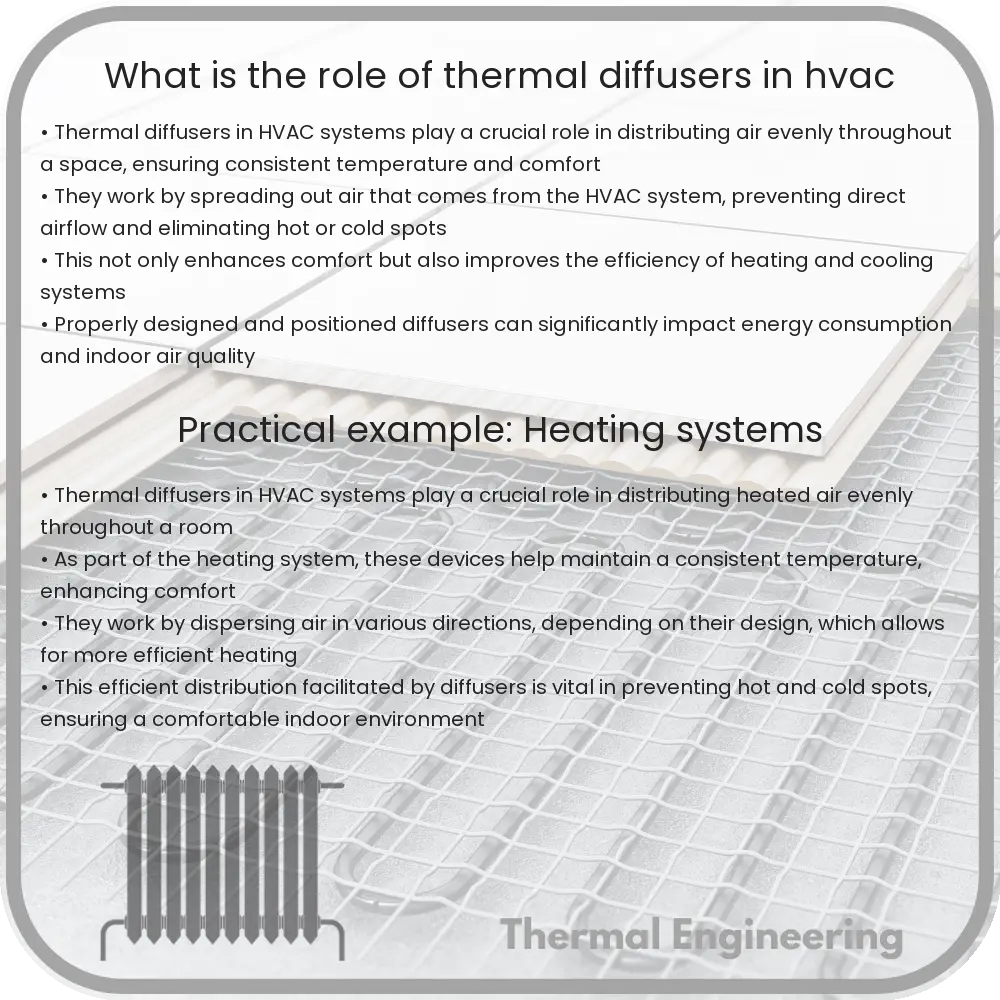Learn about thermal diffusers, their types, functionalities, and importance in enhancing HVAC system efficiency and indoor comfort.

Understanding the Role of Thermal Diffusers in HVAC Systems
Heating, Ventilation, and Air Conditioning (HVAC) systems are integral to maintaining indoor air quality and comfort in buildings. One of the critical components of these systems is the thermal diffuser, which plays a pivotal role in the distribution of air within a space. This article explores what thermal diffusers are, how they work, and their importance in HVAC systems.
What is a Thermal Diffuser?
A thermal diffuser, often simply called an air diffuser, is a device designed to control the direction, velocity, and flow pattern of air as it enters a room. Typically mounted on ceilings or sidewalls, diffusers help to evenly distribute air throughout a space, ensuring consistent temperatures and aiding in the efficient operation of heating and cooling systems.
Types of Thermal Diffusers
- Linear Diffusers: Ideal for long and narrow areas, these diffusers distribute air through slots, creating a uniform flow.
- Swirl Diffusers: These produce a swirling motion that helps to rapidly mix supplied air with the room air, improving the efficiency of air distribution and temperature mixing.
- Slot Diffusers: Often used in architectural applications, slot diffusers provide flexibility in airflow direction and are barely noticeable, blending effortlessly with the decor.
- Louvered Diffusers: Equipped with adjustable louvers for directing air flow, these are common in residential and commercial buildings.
How Do Thermal Diffusers Work?
Thermal diffusers work by distributing conditioned air (heated or cooled) from an HVAC system into an indoor space. The design of the diffuser impacts the flow and spread of air. As air is forced through the diffuser, the vanes or louvers within the device direct the airflow in patterns suitable for the space. This could be a broad spread for large areas or a directed stream for more targeted air distribution.
The effectiveness of a diffuser in distributing air influences the HVAC system’s efficiency. Properly designed and positioned diffusers can eliminate hot or cold spots, contributing to a more comfortable environment by ensuring uniform air distribution and temperature control across the entire room.
The Importance of Thermal Diffusers in HVAC Systems
The design and selection of thermal diffusers are crucial for the overall performance of HVAC systems. Here are a few reasons why thermal diffusers are essential:
- Energy Efficiency: Efficient diffusion of air leads to optimal utilization of generated heat or cool air, thereby reducing the workload on HVAC units and saving energy.
- Air Quality: Effective air diffusion helps in circulating and filtering air, which enhances indoor air quality by distributing fresh air more evenly and improving the expulsion of pollutants.
- Comfort: By managing air distribution, diffusers help in maintaining consistent indoor temperatures, reducing drafts, and contributing to the overall comfort of building occupants.
- Noise Reduction: Properly selected and installed diffusers can help minimize noise levels associated with HVAC systems, as they can be designed to operate effectively at a lower velocity.
Conclusion
In conclusion, thermal diffusers are more than just pathways for air to enter a room. They are meticulously designed components that significantly affect the comfort, efficiency, and air quality of indoor environments. From selecting the appropriate type of diffuser to ensuring its correct placement and maintenance, understanding the role and functionality of thermal diffusers is vital for anyone involved in building operations or management.
The integration of effective thermal diffusers into HVAC systems plays a pivotal role in achieving an optimal balance between energy efficiency and occupant comfort, making them a key factor in the design and operation of modern buildings.